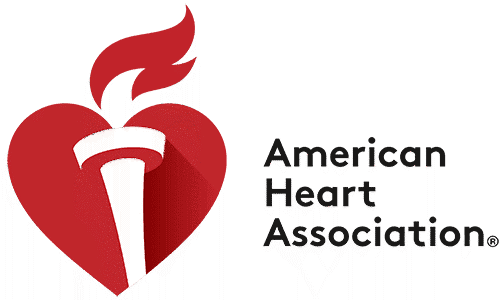Tagged with: AHA
April 28, 2025
What to know to save a life: The key to cardiac arrest survival
Bystander training on spotting and using defibrillators can greatly improve cardiac arrest survival, but many people don’t know what to do.
When a woman collapsed on an escalator at the Buffalo airport last June, Phil Clough knew what to do. He and another bystander put her flat on her back and checked her pulse and her breathing. Then she stopped breathing altogether. Realizing that she might be having a cardiac arrest, Clough immediately started doing chest compressions, pressing hard and quickly on the center of her chest, while others nearby called 911 and ran to get an automated external defibrillator. Within seconds of receiving a shock from the AED, the woman opened her eyes. By the time the airport rescue team arrived a few minutes later, she was conscious and able to talk with rescuers.
Filed Under: News, Highlights | Tagged With: AED, CPR, cardiac arrest, Defibrillator, Defibrillator Registry, Michelle Andrews, Phil Clough, 911, Automated External Defibrillator, Automated External Defibrillator Registry, American Heart Association, AHA, AED Locations, Cardiac Arrest Stats, Identifying AEDs, NEAR Registry, Nearby AED, 911 AED Registry, National AED registry, National Emergency AED Registry, AED Registry, AED Response, AED Responder, AED Map, PulsePoint AED, PulsePoint AED Registry, Elijah White, ZOLL, CPR Training, Good Samaritan, AED Law, AED Training, Citizen CPR Foundation, citizen responder, HEARTsafe, 911 Telecommunicators, T-CPR, T-AED, AED-Needed Alerts

October 22, 2020
Updated American Heart Association Guidelines Recommend Mobile Technology to Alert Bystanders
The AHA’s 2020 CPR Guidelines Recommend Emergency Dispatch Systems Alert Willing Bystanders Through Mobile Phone Technology, Like PulsePoint, to Assist in CPR and AED Retrieval
The 2020 American Heart Association (AHA) Guidelines for Cardiopulmonary Resuscitation (CPR) and Emergency Cardiovascular Care (ECC) were just released to include updated CPR guidelines that direct emergency dispatch systems to use mobile technology to activate early bystander response in sudden cardiac emergencies. The PulsePoint Respond app, the North American standard in alerting willing bystanders to CPR-needed events, is currently in more than 4000 communities and has built a network of more than 2.5 million subscribers.
Filed Under: Press Release, Highlights, News | Tagged With: American Heart Association, AHA, Guidelines, cardiac arrest, AED, AED Registry, Michael Kurz, Alabama Resuscitation Center, Michael Sayre, Steven C. Brooks, Canadian Institutes for Health, CIHR, Queen's University, CPR